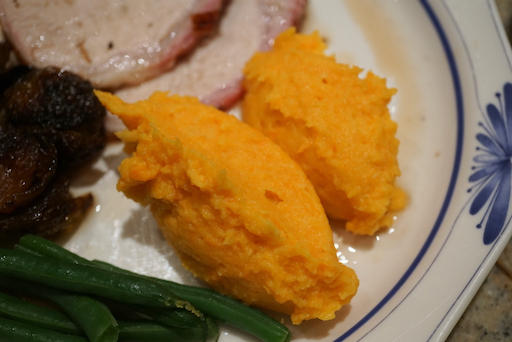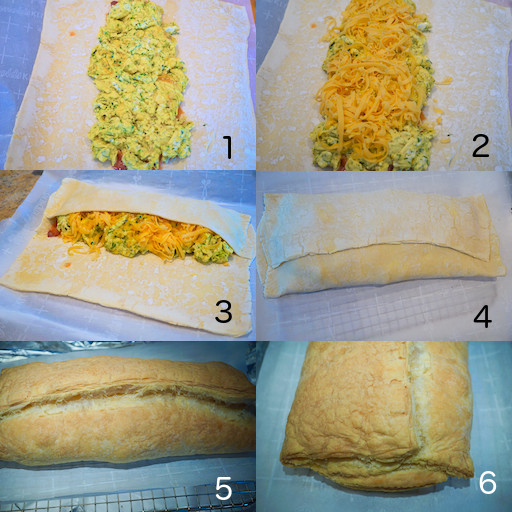I asked my wife if she wanted the soba cold or warm. She chose warm. So I made "Kakesoba" かけそば. I topped it with all "osechi" items to make it "New Year soba". Some came from the Sushi Taro osechi box some are what I made.
We used one portion in a plastic wrap for two of us.
How to cook "raw" 生そば or "teuchi" soba 手打ちそば:
Since most of us including me usually have commercially made dried soba, it may be worthwhile to mention how "teuchi soba" should be cooked (mostly for my own reminder).
1, Large amount of rapidly boiling water.
2. Add soba by separating and distributing in the water.
3. Gently move the soba in slow circular motion with a pair of long cooking chopsticks to prevent the soba from sticking to each other but not to break the soba. I cooked about 1 minute and half.
4. Scoop up the soba using a wire-meshed ladle, if you want "Sobayu" 蕎麦湯 (which is the water in which soba was cooked) to dilute the dipping sauce for drinking (applicable to cold soba). Otherwise, just drain it in a colander and gently wash it in running cold water (this process is important to remove the cooked flour on the surface of the noodles (if left on, the flour would make it a bit slimy) and to cool down the soba to make it firm.
5. For warm soba, either you could warm it up again by dipping it in hot water or briefly warming it in the soup broth. Since my wife has a "cat's tongue" (her own words) she does not like very hot soup so I chose to just to put the cooled and washed noodles in the bowl directly (see below).
These are the toppings I used for the New Year soba. The sake-steamed shrimp, ume-fu (flower or more specifically plum blossom-shaped gluten cake), and white and red fish cakes are from the osechi box. Chopped chives (I could have used "Mitsu-ba" since I had it but I forgot), sugar snaps in salted broth, and the datemaki are what I prepared. I prepared bonito and kelp broth using a dashi pack and added Chef Kitayama's tare sauce to taste (not quite 1:1) and kept warm on a low flame.
I warmed these toppings (except for the chives) briefly in the simmering broth and assembled the final bowls (see the first and second pictures). I then poured in the hot soup. This was quite good. I could have gone with a "volcanic" hot soup but my wife was happy with this since it was safer to eat without burning your mouth. I do not know if soba eaten in the 2nd day of New Year will bring any luck and longevity but we enjoyed it nonetheless.






























